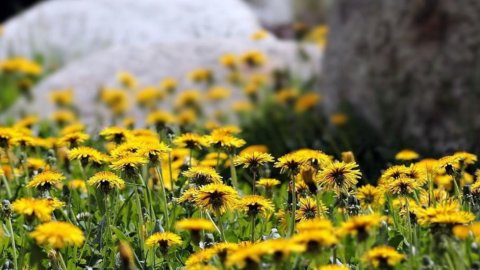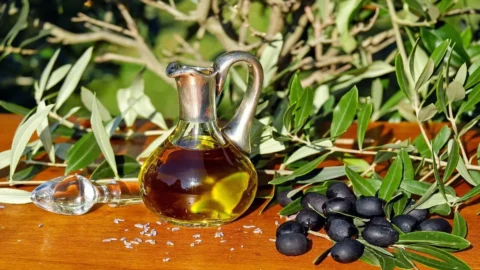They are called Sclopìt, radic di mont, bruscandoli, elderberry, dandelion and wild asparagus: these are just some of the varieties that bloom this season in Friuli Venezia Giulia, herbs and roots that can be gathered in permanent meadows, in the plains and along the rivers from the mountains to the lagoon crossing the Karst, herbs with exceptional medicinal and health properties, but they are also elective ingredients protagonists of the dishes which in this period offers the local culinary tradition this time of year. And, last but not least, since those who talk about health and well-being can offer the starting point for healthy walks to get to know the riches of Friuli-Venezia Giulia and some still unexplored corners of the territory.
In traditional recipe books, from the Karst hills along the entire Alpine arc to the Friulian Dolomites passing through the lagoon and the plain countryside, the wild herbs they have even become protagonists of creations of many chefs – even starred – of the region for ravioli, omelettes, risottos, meat and game dishes. Just like great cooks, even simple cooking lovers can take advantage of the beautiful spring days to go in search of silene, bruscandoli, dandelion (more commonly known as dandelion), rue, nettle, wild mint, of wild fennel, radic di mont.
An incredible variety of herbs and roots beneficial for the body and excellent in the kitchen
Le recommended walks range from the paths of the Karst, both in Trieste and Gorizia, to the valleys of Carnia, Tarvisiano and the Friulian Dolomites, to the roads of the Natisone valleys to go in search of nature and meadows also in the areas of the Pordenone area, rich in resurgences, as well as those of the lower Friuli plain. In general, many corners of the region's unspoilt nature offer infinite resources in terms of spontaneous vegetation: it is enough to walk in a countryside meadow in Medio Friuli or on the floodplain banks to come across the various spontaneous plants. Sorrel (diuretic and anti-inflammatory), wood sorrel, lemon balm, mallow, (diuretic and anti-inflammatory), yarrow (useful for hemorrhoids and varicose veins), plantain (anti-anemic and anti-hemorrhagic), borage (detoxifying and useful in phlebitis), meadow cress, rosole (wild poppy), and more chives, garlic and alliaria, alongside wild garlic.
How to preserve bear's radicchio in oil
Lovage, or mountain celery, is also found in the meadows of Carnia. The name radicchio dell'orso, radic di mont, or even radic dal glaz refers to the alpine Cicerbita, a wild plant similar to dandelion whose shoots can be gathered on mountain pastures, especially in the Alps between 1000 and 2200 m asl when the snows melt. It can also be found in the northern Apennines, but much more rarely.
In the Adamello area it is called bear radicchio, because being the first sprout to grow in late spring, it was said to be the first to be eaten by the bear when it woke up from hibernation.
The taste is reminiscent, especially if eaten raw, of radicchio, especially wild radicchio, but with a characteristic bitter note which reveals a high content of beneficial bitter substances, such as phenolic compounds and sesquiterpene lactones: antioxidants of great health value.
In ancient times, the mountain people kept it in wooden trunks, in brine.
Today it is common to preserve it in oil, after scalding in water and vinegar, followed by the immersion of the radicchio in olive or seed oil, with the addition of garlic and other spices and aromatic herbs. It is also eaten raw, or fresh in salads.
It is not easy to cultivate and in recent years the harvest, once practiced only for self-consumption, has intensified, and is subject to daily limits (from 1 to 2 kg per day according to the regions). Its habitat and harvest time are very limited – 2/3 weeks – even if it is not as highly endangered as in Scotland.
The recipe for preserving radic dal glaz in oil
In the book "Old and new cuisine of Carnia" published by Gianni Cosetti for the types of the Ergon Publishing Company of Ronchi, the following recipe is proposed:
In a saucepan, bring to the boil a liter of white wine and 5 dl of vinegar, salted and flavored with half a cinnamon stick and 5 cloves. Then dip the well-peeled and washed sprouts (one kilo) in it; as soon as the boil resumes, drain them and leave them to dry for 12 hours in a cloth.
Then place them in an airtight jar covered with oil (half a liter is needed) and then store them in the refrigerator.
If, on the other hand, you prefer "city" walks, in the province of Gorizia alone there are 19 kinds allowed for harvesting, including the most popular hop sprouts (urtissoni or bruscandoli), wild asparagus (aspargina), and elderberry. Of the most sought-after paths for harvesting, many run along the Isonzo, along the banks towards the border with Slovenia. Places for strolls, at the time, also loved by the Habsburg nobles on holiday in what they called "the favorite tourist destination for the mild climate and its tranquillity", but they are not lacking in meadows in the rest of the region.
The most famous spontaneous herb among children (and in the kitchens of grandmothers) is silene (Silene vulgaris) or sclopìt, a term that derives from the custom of crushing its flowers on the back of the hand to cause the noise of an explosion. The herb is found in uncultivated land, in permanent meadows and in the different areas of the region it is referred to as grisòl, sclopìt, s'ciopeti or carleti.
Finally, the dandelion. With its flowers (very intense yellow) it is possible to obtain a "fake honey" or "honey for the poor" which can be used to glaze omelettes thus creating a "Central European" version of maple syrup.
In late May you come across salicornia, the sea asparagus. It is not a seaweed but it is certainly the plant that brings all the salinity of the sea into the taste. It is harvested in the lagoon areas of Grado and Marano or on the islets that emerge from the water, excellent as an accompaniment to fish, blanched or fried and seasoned to taste.





